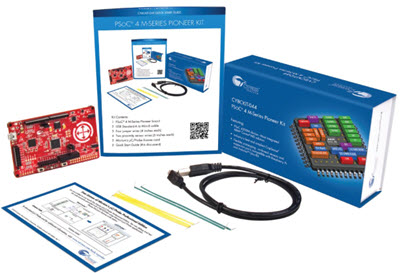|
For novel ideas about building embedded systems (both hardware and firmware), join the 35,000 engineers who subscribe to The Embedded Muse, a free biweekly newsletter. The Muse has no hype and no vendor PR. Click here to subscribe.
|
Peter Wilson's brand new book Design Recipes for FPGAs is an interesting addition to the writing about FPGAs. At 369 pages it might seem to be the One Real Reference, but in fact it's more a surf through design examples.
The examples are given in both VHDL and Verilog, the two most common Hardware Description Languages (HDLs) used in this industry. The book starts with a chapter about the basics of each; VHDL is treated in 16 pages; Verilog in 6. Those amount to about the fastest getting-started guides for any language I've seen. And the material is pretty good. It's far from complete, of course, but will give the novice a grounding in the basics.
But one warning: HDLs look a lot like a programming language. The last thing you want to think of when working with an HDL is programming. In C and other computer languages statements execute one after another. There's a flow. That's mostly absent with an HDL. It's hardware; everything is happening at the same time (with exceptions). In fact, in general (again, there are exceptions) it doesn't matter what order you write the HDL "instructions" in. At the latest ESC Charles Fulks gave some talks about FPGA work; we had a beer the night before and he said he prefers VHDL over Verilog because it looks less C-like than the latter, making it less likely the unwary will fall into the sequential-execution trap. Design Recipes for FPGAs doesn't talk about this, probably since it's aimed at people building hardware. Be warned; HDLs are very different from programming languages.
FPGA design has a number of steps – the testbench, compilation, synthesis, routing, etc. and Mr. Wilson does take the reader through the design flow. But this is at a very high level. You'll need additional information to actually create a working FPGA. I recommend both Xilinix's and Altera's web sites as references. Xilinix's Vivado has a free version with limited, but enough for learning, functionality.
I thought the book would be a dreary litany of design examples that aren't useful or even interesting. But the second design presented is a complete CPU in both HDLs! The instruction set is tiny, but then so is the required HDL. It's pretty cool and partitioned nicely so as to be extremely understandable.
Later chapters give code for the DES encryption algorithm, filters, VGA controllers, etc. What's good about these is the clear HDL code that's well-described. Less than wonderful is that you'll get nothing from, say, the filter chapter unless you understand Z transforms. Mr. Wilson does give good references to use in boning up on that material.
There's an excellent chapter on mixed-signal (analog and digital together) with the AMS extensions, as well as good pointers on optimizing designs to use less FPGA fabric.
This is a great book for someone wanting to learn HDL design as the examples are crystal-clear, and it can be hard to find real-world HDL examples on the 'net. The chapter on a CPU design alone will teach one a lot about coding for FPGAs. You will want some additional material. I recommend The VHDL Language Guide (free here http://web.ewu.edu/groups/technology/Claudio/ee430/Cad/AccoladeVHDLref.pdf) and Verilog HDL (not free from http://www.amazon.com/Verilog-HDL-paperback-2nd-Edition/dp/0132599708).
Published April, 2016


